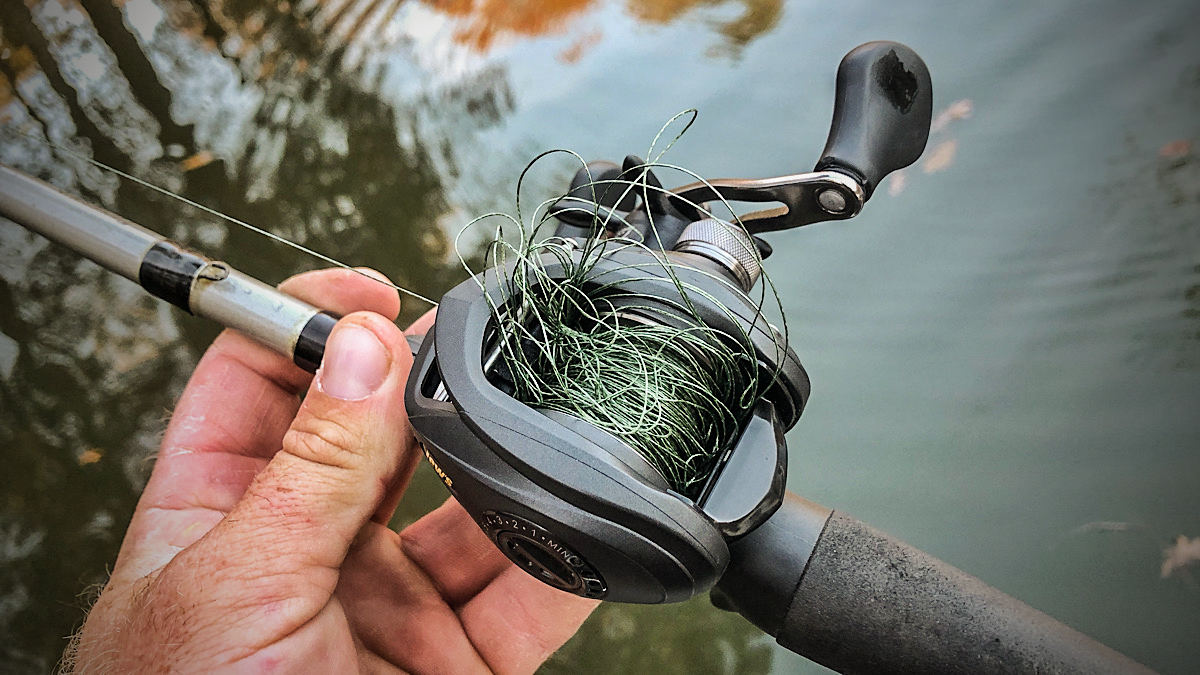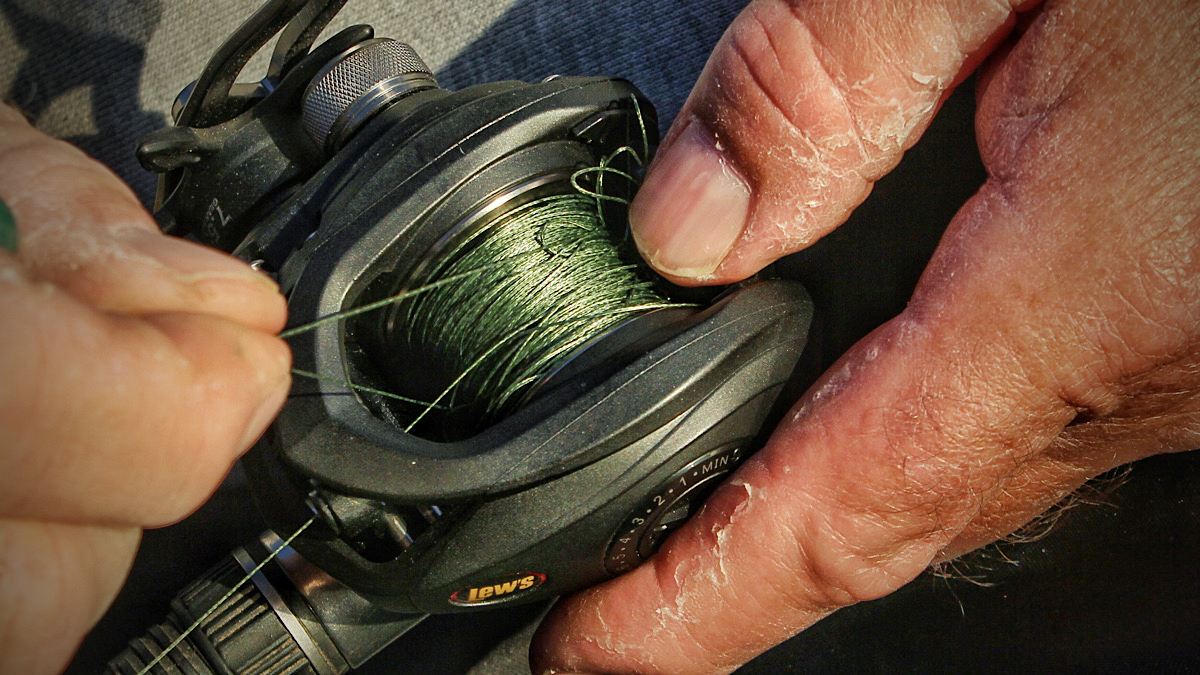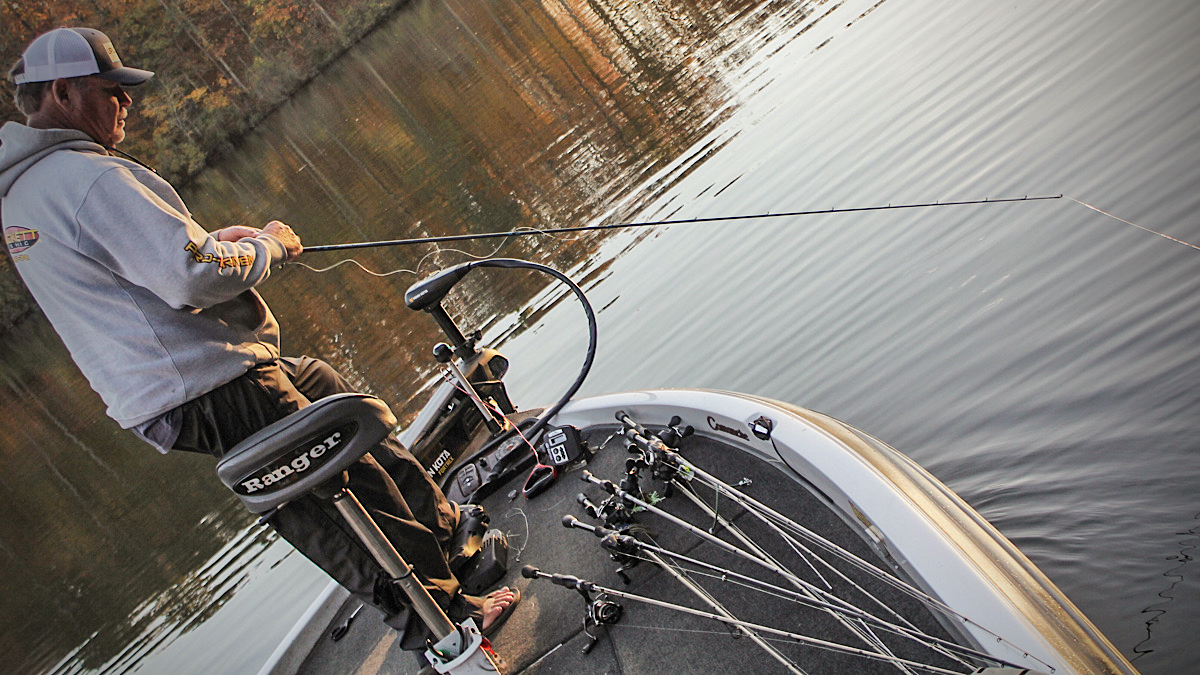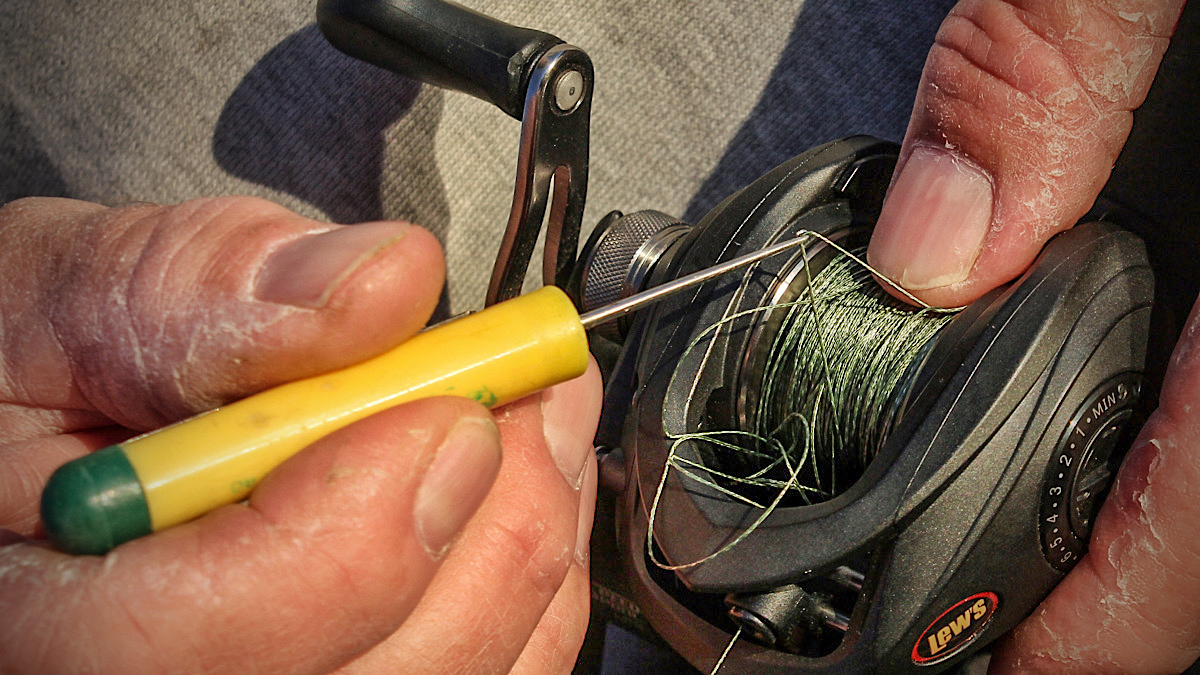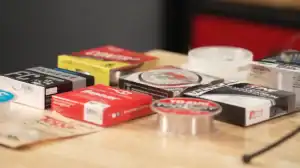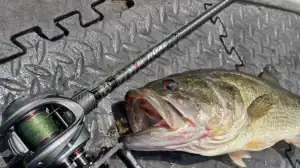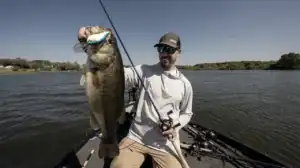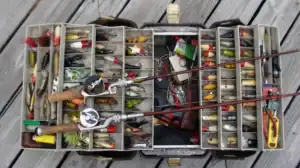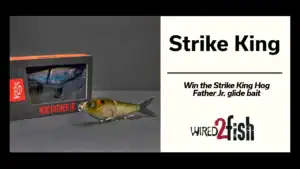Backlashing a fishing reel is no fun whatsoever. Whether you refer to your spool running over on a cast as a backlash, bird’s nest or my personal favorite—a professional overcast—we’ve all been there. The tendency to backlash a reel is often very embarrassing and discouraging for newcomers to the sport and something that prevents them from sticking with fishing. If this sounds familiar, I want to encourage you today not to give up on fishing with a baitcaster just yet. There are three tricks I’ve learned that I plan to share with you in a moment which will help you with beating this common, frustrating foe.
But even before that, I suggest you read this article to help prevent a lot of backlashes before they ever even happen. All baitcasters, to my knowledge, come preset from the manufacturer with the spool tension knob, drag and brake system set as loose as possible. If you set up your reel correctly to begin with, you’ll see a drastic reduction in the tendency to backlash a baitcaster. But in the event you do backlash your reel, hopefully these three tips will make correcting that error a whole lot easier.
Go slow
The absolute first thing you want to do is go slow as you start to assess the backlash. I see a lot of anglers get frustrated and just start snatching on their main line or on loops in their spool right out of the gate. This cinches the line down into the spool and makes picking out the backlash nearly impossible. Instead, slowly pull on the mainline and see if your spool will start to turn. Sometimes, you can do this and just ease the backlash out. If the spool stops spinning, it’s time to look for a loop in your line to tug on a bit.
See if you can tell which loop needs to be picked out first. As you pull on your mainline and the spool stops, you’ll notice the loop that’s stopping the spool from spinning will have a sharp point to it. That’s where your mainline is pulling against it. That’s the loop you want to pinch with your fingers and pull on. Often, this will free up the spool to start spinning again and you go back to pulling on the mainline. But sometimes, as you pull on this first loop, another loop will develop a sharp point to it and you have to pull on that loop to get the first loop freed up.
This can go several loops deep sometimes before you get to the loop that’s holding up progress. At the point you pull the loop that’s causing the issue free though, you’ll be able to pull on the main line again and your spool should start spinning. Repeat this process until you reach the bottom of the backlash, but I recommend you do this simultaneously with the next tip.
Use momentum to prevent a pileup
If you’re fishing from a boat, you want to use the momentum of the boat to keep the line you’re pulling off your reel from piling up at your feet. If you’re fishing from the bank, you can do the same thing by walking down the bank. If you’re wading in a creek or river, let the current do this for you.
Regardless of where or how you’re fishing, you never want to pull a backlash out and allow it to pileup at your feet. This will lead to a whole new problem when you get the backlash picked out and you go to reel your line back in. Just as you win one battle, the war will continue to rage as you find knot after knot has formed in the pile of slack line.
Instead, by keeping your foot on the trolling motor for instance, the momentum of the boat helps pull your slack line through the rod guides as you pick the backlash out. Then when you’re done with the backlash, you simply reel the line back in that you’ve pulled behind the boat into a nice straight line. There are hazards to this, you don’t want to troll across a bunch of trees while dragging a half ounce jig behind the boat, for instance. And you don’t want to walk way up the bank through a bunch of bushes to do this. Again, be careful to not create a problem while trying to solve a different one. But somehow, someway, make sure you’re not piling up your line at your feet as you pick out a backlash.
Use a line pick when things are tough
Sometimes, no matter what you do, your line is going to cinch down into the spool. This happens on the initial backlash on occasion. Say you’re casting a heavy bait really hard and you backlash; that first loop may be cinched down deep. There are times when I start to think I have a backlash almost picked out and then I commit to tugging on the main line a little harder to pull it free, only to find it’s not quite there yet and I’ve now cinched the loop down into the spool.
Whatever the case, a line pick like the one in this photo is extremely helpful in these situations. My dad got this one a long time ago from Bass Pro but you can also find a handy one from Rapala here. Using the thin-wire hooked tip of a line pick, you can sneak in under cinched-down line and ease it up to create a loop that you can then tug on. Be careful here though not to damage your line. When you go to digging with the hooked tip, you may scuff your fluorocarbon or monofilament. There’s also a tendency for the point of then pick to go between the fibers of braided line. You don’t want to do either of these things as they’ll damage the integrity of the line.
Remember to always start slow and stay slow for that matter. Patience is key when picking out a backlash. If you run into a particularly pesky cinched down spot in your line or a knot, a line pick is extremely helpful. Whatever you do, however, don’t let the line pile up at your feet as you pick the backlash out. Using these three tips, hopefully you’ll be picking out backlashes in no time and overcome one of the greatest obstacles in all of bass fishing.
